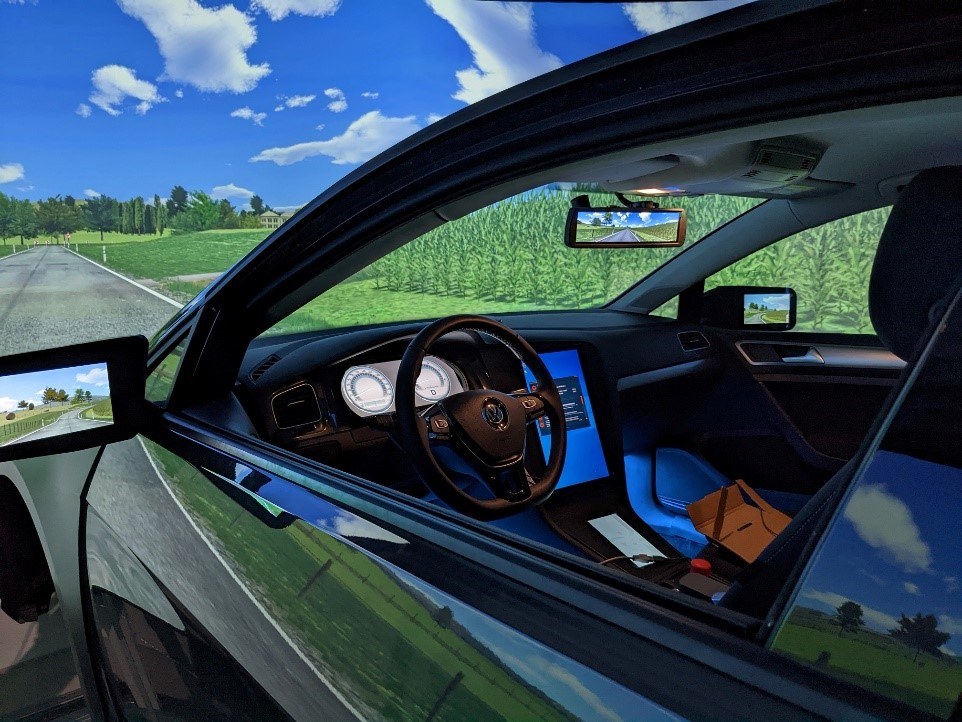SafetyLoop Lab – Motion Simulator
The Institute of Systems Engineering for Future Mobility conducts intensive research into software-defined vehicles and human-machine interaction in cars. The focus here is on safeguarding innovative technologies and models in order to ensure the reliability and intuitive operation of vehicle automation systems. From precise driving simulations to individually customisable systems, the basis for sustainable, user-friendly mobility is being created.

Human-machine interaction in the automotive sector
Research into human-machine interaction in the automotive sector has a long tradition at the DLR-SE Institute. The first studies on a compact driving simulation platform were carried out back in 2009, at that time still at the Oldenburg computer science institute OFFIS. The aim was to develop computer models that could realistically simulate the behaviour of drivers. Such models are essential for testing and optimising the interaction between humans and vehicle automation systems on the computer in early development phases. The focus here is on improving the understanding between vehicle and human and providing the relevant information at the right time.
Thanks to over 10 years of experience in driving simulation, these findings have been transferred to a state-of-the-art driving simulator system. This facility not only enables us to continuously develop our research, but also ensures that it is aligned with the latest scientific and technological standards. The simulator, consisting of a fully equipped test vehicle on a hexapod platform, is used both for test subject studies and as a technology demonstrator.
Change in research focus
In the last 10 to 15 years, the focus of research has shifted from interaction with passive assistance systems (e.g. lane departure warning systems) to vehicle automation systems. These are increasingly taking over vehicle control tasks. However, until full automation is achieved, it will still be necessary for people to take control in complex or unpredictable driving situations (e.g. in roadworks, unclear lane guidance or complex intersection situations).
This change of control between man and machine harbours specific safety risks, as drivers are often "removed" from the active driving situation (known as being "out of the loop"). At critical moments, however, they must be able to quickly take back control of the vehicle. To ensure a safe and intuitive takeover, we are researching effective ways of communicating decision-relevant information clearly and comprehensibly - for example via head-up displays.
Customisation and user-friendliness
Another key research topic is the individualisation of automation systems. These should be able to adapt flexibly to the wishes of the vehicle occupants, be it in terms of route planning, the execution of driving manoeuvres or with regard to safety and ecological aspects. To make these customisations user-friendly, the user interfaces of the systems must be intuitively understandable. It is equally important to clearly display how parameter changes affect driving behaviour - for example, when manoeuvre decisions are changed. At higher levels of automation in particular, it is necessary for humans to cooperate with the vehicle automation system. A shared understanding of target fulfilment is essential for this.

Platform for holistic research and development
In addition to human-machine interaction, our platform also serves to evaluate and demonstrate methods and software tools that are developed in the individual research groups at the institute. These tools are used in different phases of the development of automation systems, with a particular focus on demonstrably safe system developments. A simulation environment is an efficient tool for making meaningful assessments and for analysing and illustrating specific traffic situations.
